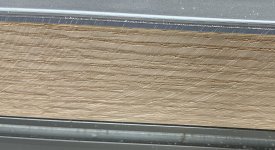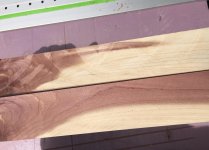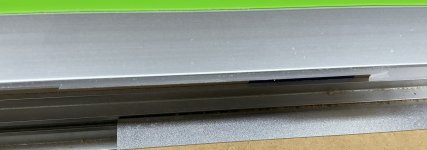ericsink
Member
- Joined
- Jan 14, 2025
- Messages
- 1
The TS-75 is new-ish to me, and I’m preparing for a bunch of hardwood rip cuts, so I got the panther blade. But I figured maybe first I should try a test cut with the stock blade, for comparison purposes. So I ripped a thin strip off a 3 foot red oak board, 1.75 inches thick.
I thought this was an unfair test, but I’m actually rather impressed. I took it slow, but the saw didn’t seem to have much trouble. No burning. Some blade marks, but overall the cut is pretty clean.
Granted, this board would actually be within the range of a TS-55, so it isn’t THAT thick. And red oak isn’t THAT hard.
Still, way better than I expected. Not bad at all.
I thought this was an unfair test, but I’m actually rather impressed. I took it slow, but the saw didn’t seem to have much trouble. No burning. Some blade marks, but overall the cut is pretty clean.
Granted, this board would actually be within the range of a TS-55, so it isn’t THAT thick. And red oak isn’t THAT hard.
Still, way better than I expected. Not bad at all.




